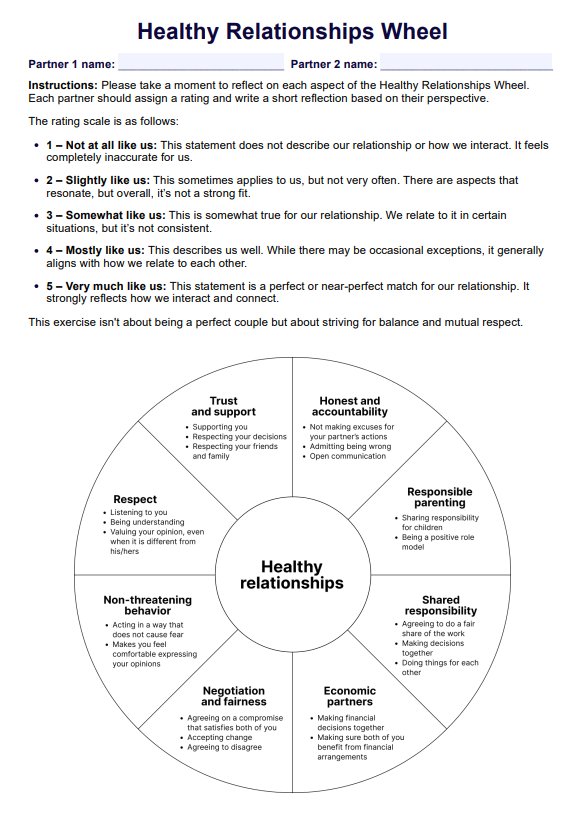Individuals, therapists, counselors, and educators use the Healthy Relationships Wheel.

Healthy Relationships Wheel
Use the Healthy Relationships Wheel to assess and promote balanced, respectful relationships, fostering long-lasting and healthy connections.
Use Template
Healthy Relationships Wheel Template
Commonly asked questions
The wheel is used to assess personal relationships' health and educate individuals about relationship dynamics.
The wheel is used as a visual tool to represent different aspects of a healthy relationship and to facilitate discussions and self-reflection about personal relationships.
EHR and practice management software
Get started for free
*No credit card required
Free
$0/usd
Unlimited clients
Telehealth
1GB of storage
Client portal text
Automated billing and online payments











